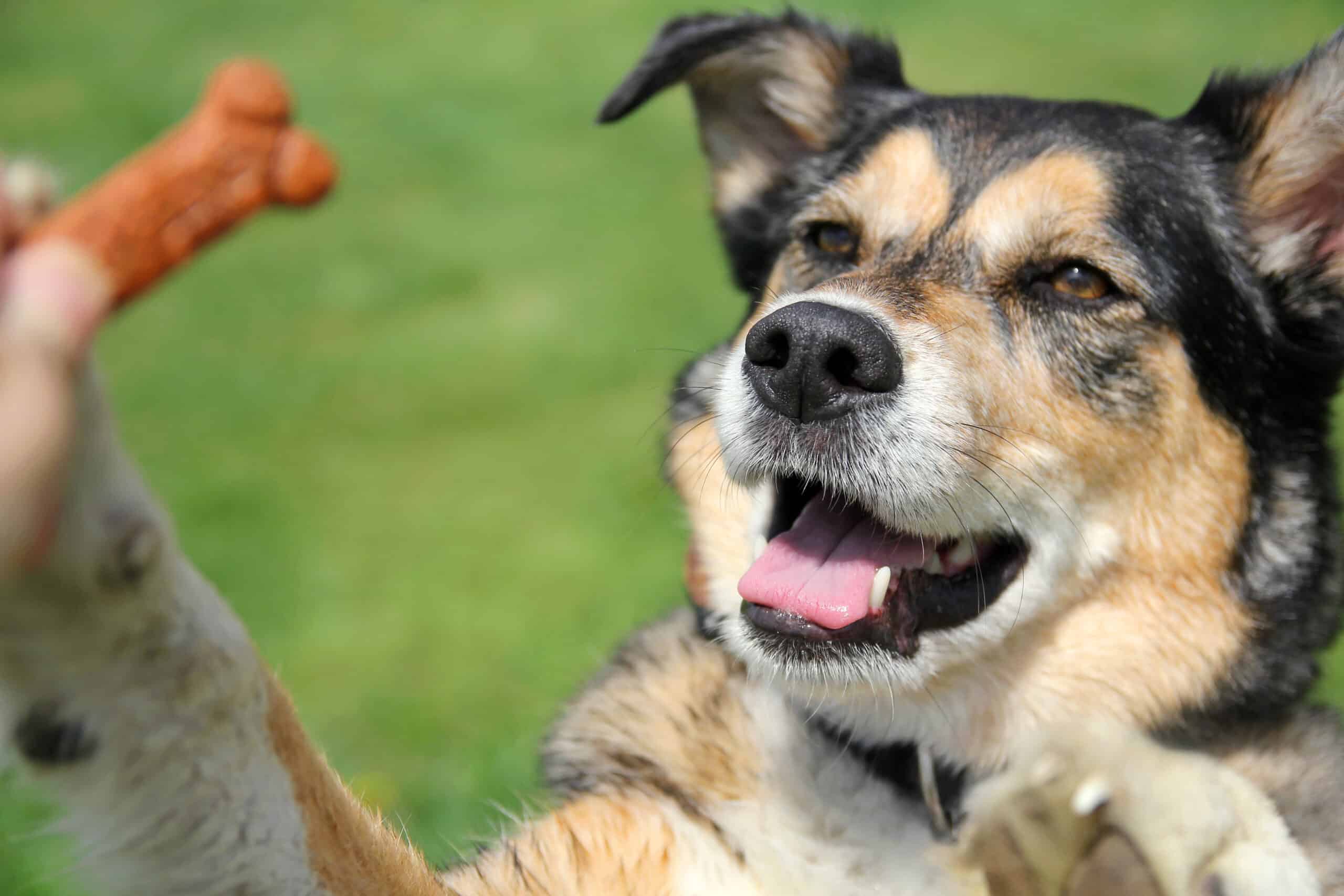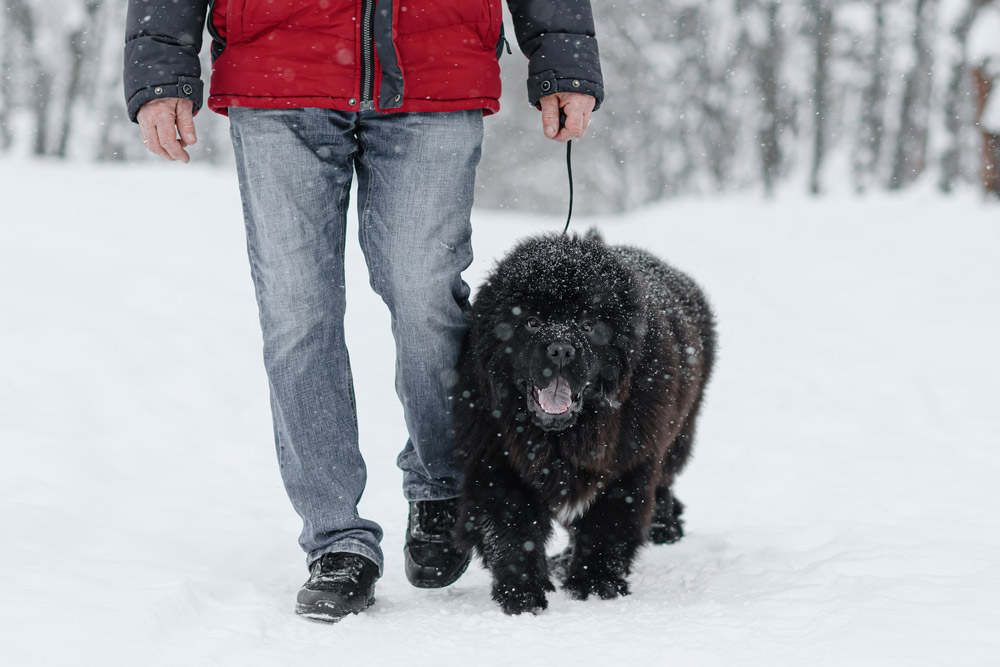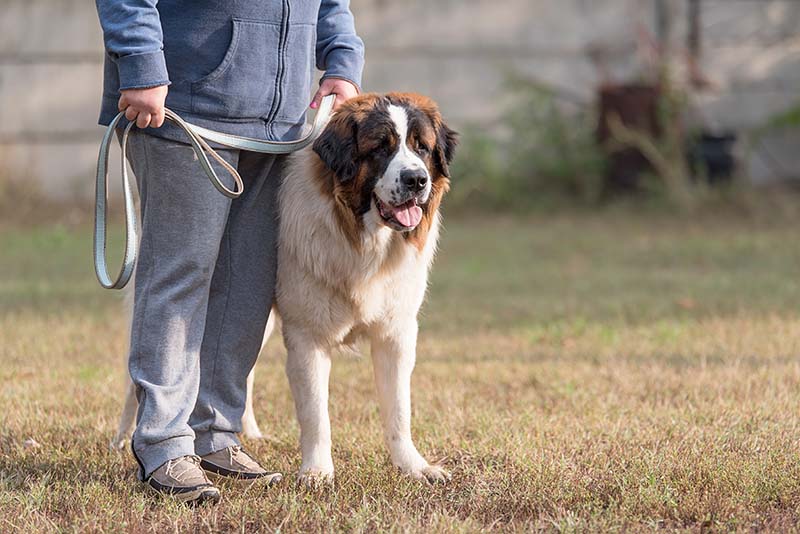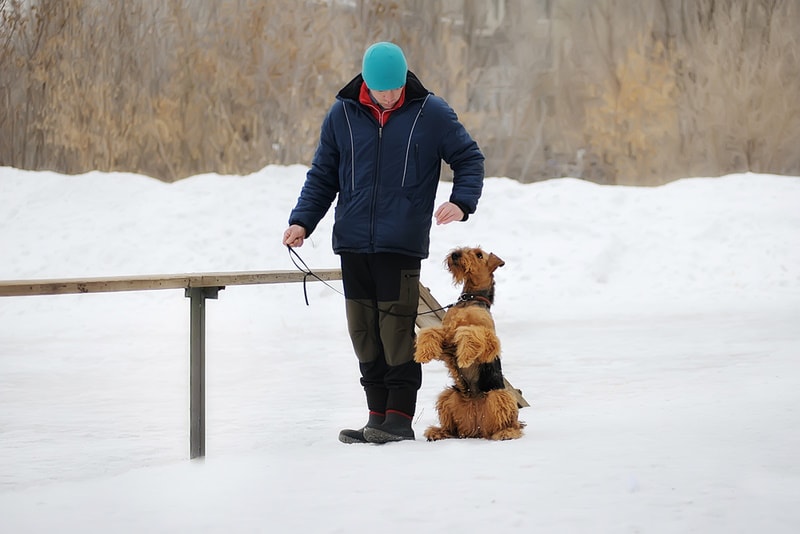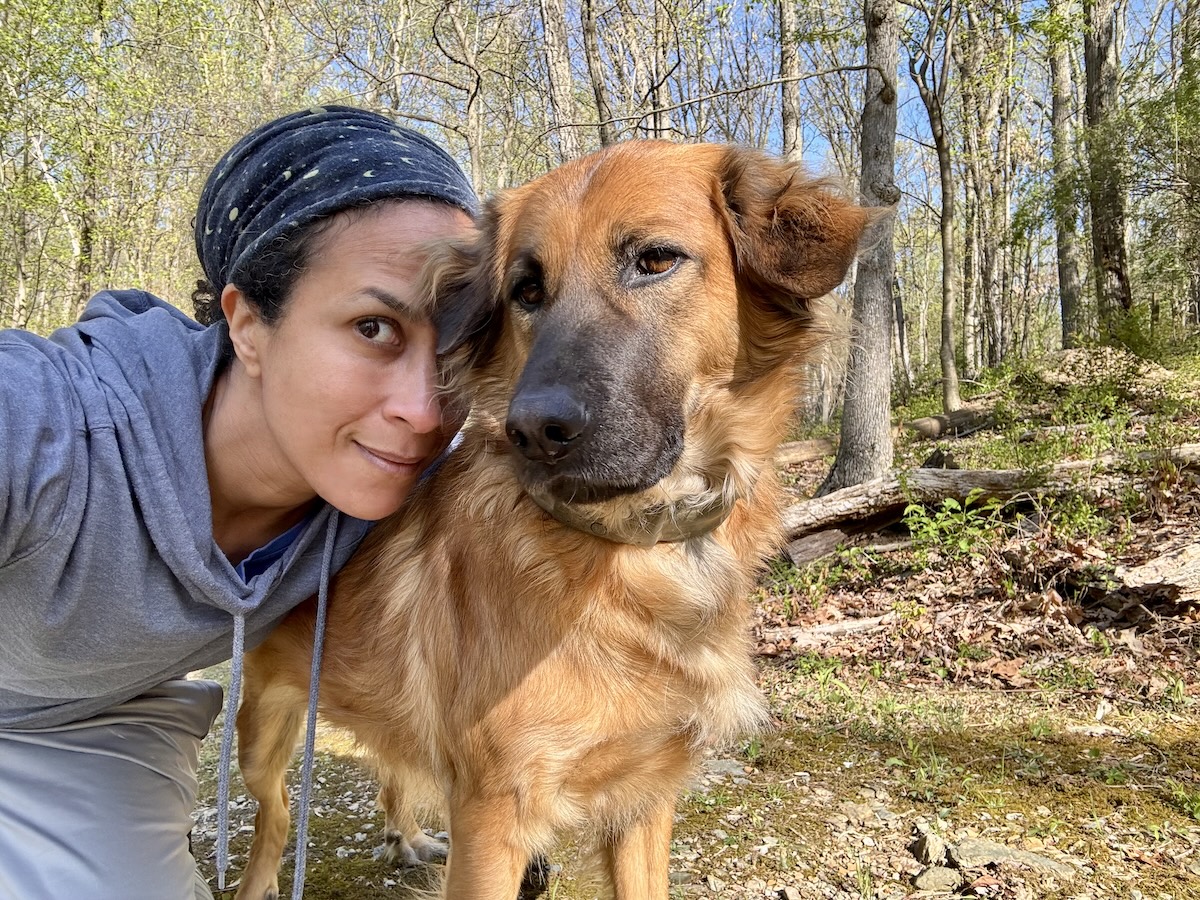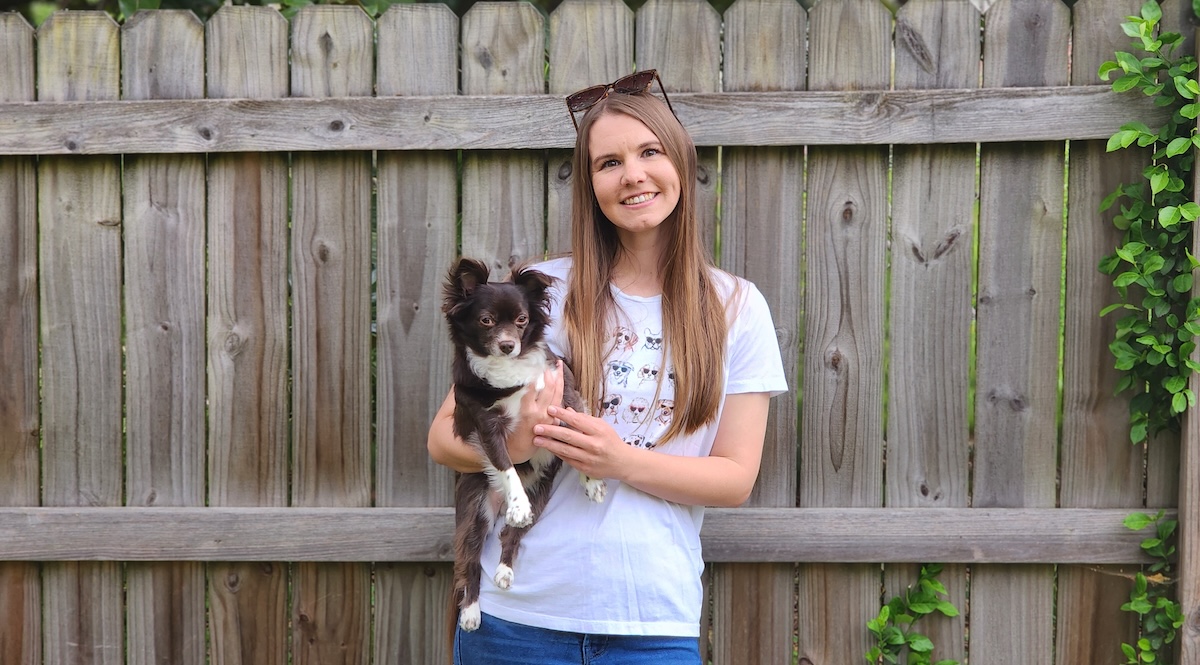When training a mixed breed dog find out what motivates him. Rewards vary, but all dogs respond to food. Experiment! Add some breed-specific enrichment when possible and leave room in your routine for his personality to shine.
Teach your mixed breed dog basic cues such as:
- Sit
- Stay
- Down
- Recall
- Loose-leash walking
- Four on the Floor (not jumping up on people)
- Leave it and Drop it
And to really know a cue, your dog should generalize that cue to different environments with various levels of distractions. For example, your dog should be able to sit in your living room as well as he does at the vet’s office or outside on a walk.
Breed-specific dog training
An at-home DNA kit makes a great and easy way to determine your dog’s breeds. The results help with challenges you may face in training. Research your dog’s breeds to find out which behaviors you might see and what type of training or cues you may need to focus more on.
For example, Beagles, Siberian Huskies, Dachshunds, Yorkshire Terriers and Weimaraners have the reputation for being stubborn, so you need to be more patient and more creative with your efforts. Chihuahuas and Pit Bulls, for different reasons, need extensive socialization. Australian Shepherds need to be given a job to do or they will find one that you may not approve of.
Does dog breed affect behavior?
Although breed can impact your dog’s predispositions for certain behaviors, there isn’t a single gene that causes any given behavior because environment — beginning at conception — largely influences behavior.
Some predispositions include certain breeds needing more mental stimulation than others. Terriers love to hunt. Border Collies and Australian Shepherds love to herd. German Shepherds and Belgian Malinois enjoy protection work and scent work. On the other hand, brachycephalic (short-snouted) dogs, such as English and French Bulldogs, Pugs and Pekingese, should avoid activities or sports that can cause them to overheat. Research the types of dogs that make up your mixed breed as it can guide you to the types of activities your dog might be into.
Dog breed personalities
While breed type can influence behavior, it doesn’t guarantee it, so let your dog tell you what he likes. Not all retrievers like to retrieve, and not all Labradors love water. Provide lots of opportunities, and let the biscuits fall where they may.
Explore enrichment activities to see what your dog enjoys and what could be used as rewards, especially if you’re having behavior issues or are stuck in your training. Lack of stimulation and exercise cause most behavioral problems, so ensure your dog gets enough of both. And, all dogs love to explore the world through their noses, so start with scent-work activities.
Enrichment ideas for mixed breed dogs:
- Agility
- Canicross
- Treiball
- Manners (i.e., obedience) training
- Sniffari
- Scent work
- Puzzles/games
- Trick training
Ultimately, training a mixed breed equates to training a purebred and breed is only a starting point for training. Every dog is an individual, and training should prioritize his unique needs. Work with what your dog shows you and what you observe, not necessarily what certain breeds should and shouldn’t be doing.
Featured Image Credit: ChristinLola, Getty Images

